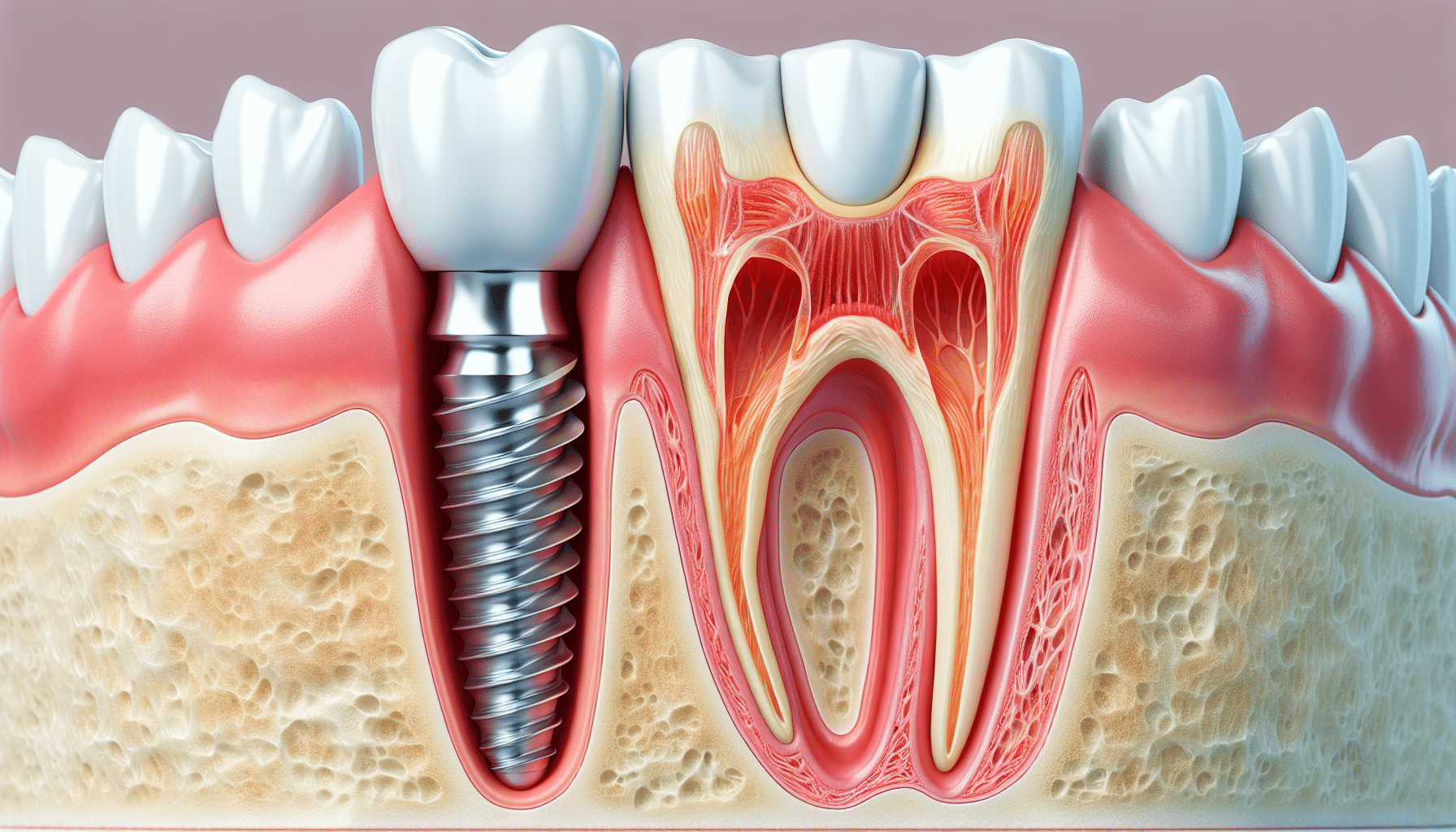All About Dental Sense
All About Dental Sense
Blog Article
The Single Strategy To Use For Dental Sense
Table of ContentsThe smart Trick of Dental Sense That Nobody is Talking AboutUnknown Facts About Dental SenseNot known Details About Dental Sense The Basic Principles Of Dental Sense
are medical tools surgically implanted right into the jaw to recover a person's capability to chew or their appearance. They give support for fabricated (fake) teeth, such as crowns, bridges, or dentures. When a tooth is shed as a result of injury or illness, an individual can experience issues such as rapid bone loss, faulty speech, or changes to chewing patterns that result in pain.Oral implant systems consist of a dental implant body and dental implant joint and may likewise include an abutment addiction screw. Root canal procedure. The dental implant body is surgically put in the jawbone instead of the tooth's origin. The dental implant abutment is generally connected to the dental implant body by the joint addiction screw and expands via gum tissues right into the mouth to support the attached synthetic teeth
(https://triberr.com/dentalsense1)Structure of The Dental Implant System picking oral implants, speak to your dental provider about the possible advantages and threats, and whether you are a candidate for the procedure. Points to think about: Your overall health is a crucial variable in identifying whether you are a good prospect for oral implants, how much time it will take to recover, and for how long the implant may stay in area.
Smoking cigarettes might influence the healing process and reduce the long-term success of the implant. The healing process for the implant body may take a number of months or longer, during which time you generally have a momentary joint instead of the tooth. the oral implant procedure: Meticulously comply with the dental hygiene directions given to you by your oral provider.
The Best Strategy To Use For Dental Sense
Implant failure can result in the requirement for an additional procedure to deal with or replace the dental implant system. Restores the capacity to chew Recovers aesthetic look Assists keep the jawbone from shrinking due to bone loss Preserves the health and wellness of the bordering bone and periodontals Aids maintain surrounding (neighboring) teeth steady Enhances high quality of life Damage to surrounding all-natural teeth throughout implant positioning Injury to the surrounding cells during surgical procedure, such as sinus opening Injury during surgical treatment (for instance, crack of surrounding jawbone) Inadequate feature, such as feeling like the teeth do not bite with each other typically A sensation that the tooth is loose or twisting in location resulting from an abutment screw loosening up Implant body failing (looseness of the implant body) because of systemic infection, which may be most likely in individuals with uncontrolled diabetics issues due to neighborhood infection in bone and periodontals supporting the implant body as a result of postponed healing, which may be most likely in clients that smoke Difficulty cleaning up the gum tissues around the implant, leading to poor dental health Without treatment periodontal condition Post-surgical feeling numb as a result of nerve impingement or damages Always inform health treatment companies and imaging specialists that you have oral implants prior to any magnetic vibration imaging (MRI) or x-ray procedures.
FDA is not aware of any type of unfavorable occasions reported for MRI or x-ray treatments with oral implants. Dental implants systems are normally made of products that comply with worldwide consensus requirements of the International Organization for Standardization (ISO) or ASTM International. These criteria have details of what makes a safe product.

A dental implant is a structure that changes a missing tooth. With screw-like tools, the surgeon inserts an implant right into the jawbone, and it serves as an anchor for a fabricated tooth, called a crown. A device called a joint links the fabricated tooth to the dental implant. The crown is custom-made to fit the individual's mouth and match the color of their teeth.
The smart Trick of Dental Sense That Nobody is Talking About
Some people are not eligible for oral implant surgery. It is for oral cosmetic surgeons to operate on individuals with: severe illnessuncontrollable metabolic diseasebone or soft cells illness or infectionIf these concerns are fixed, an individual can have the surgery. In, dental surgeons avoid operating individuals with: If people with any one of the above undertake oral implant surgical treatment, there click for info is a greater risk of the dental implant failing.

Dental implant surgical procedure is a customized process. It's not the very same for everybody. The complying with provides a basic review of what you can expect your dental practitioner, oral surgeon, periodontist or prosthodontist to do: Put the dental implant operatively. Give you time to recover. Connect the article and last crown, bridge or denture.
Next off, your specialist will meticulously position the dental implant right into your jaw. Ultimately, your doctor will certainly reposition your gum tissues and shut the incision with stitches. If your implant is near the front of your mouth, your dental practitioner will certainly make a short-lived tooth for you to use until you heal. By doing this, you won't have a space in your smile while you recoup.
The Ultimate Guide To Dental Sense
Your service provider can tell you what to anticipate in your circumstance. During the healing phase, your jawbone must fuse to the dental implant. This process, called osseointegration, is vital for stability and lasting success. This procedure can take anywhere from 3 to nine months. In many cases, it might take much longer.
As soon as your dental implant heals, your dental practitioner can attach the joint (small port post) and your final restoration (crown, bridge or denture). This generally takes concerning one hour to finish and may call for a second minor surgical procedure. You should not really feel any type of discomfort during your oral implant procedure because your company will certainly use medication to numb your periodontals.
Report this page